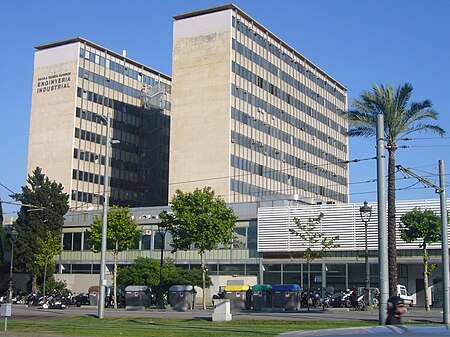ETSEIB
Education in BarcelonaEngineering universities and colleges in SpainPolytechnic University of CataloniaUniversities in Catalonia

The School of Industrial Engineering of Barcelona (Escola Tècnica Superior d'Enginyeria Industrial de Barcelona in Catalan, abbreviated ETSEIB) is a university school that is part of the Universitat Politècnica de Catalunya (Polytechnic University of Catalonia, UPC).
Excerpt from the Wikipedia article ETSEIB (License: CC BY-SA 3.0, Authors, Images).ETSEIB
Carrer de Pascual i Vila, Barcelona
Geographical coordinates (GPS) Address External links Nearby Places Show on map
Geographical coordinates (GPS)
| Latitude | Longitude |
|---|---|
| N 41.384722222222 ° | E 2.1152777777778 ° |
Address
Escola Tècnica Superior d'Enginyeria Industrial de Barcelona
Carrer de Pascual i Vila
08001 Barcelona
Catalonia, Spain
Open on Google Maps





